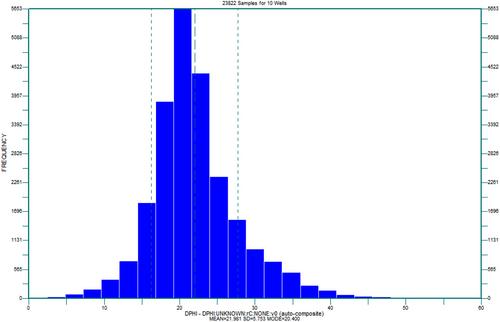Ramon H. Trevino, Susan D. Hovorka, Dallas B. Dunlap, Richard C. Larson, Tucker F. Hentz, Seyyed A. Hosseini, Shuvajit Bhattacharya, Michael V. DeAngelo
下载PDF
{"title":"确定大量二氧化碳注入和封存许可就绪地点的分阶段工作流程","authors":"Ramon H. Trevino, Susan D. Hovorka, Dallas B. Dunlap, Richard C. Larson, Tucker F. Hentz, Seyyed A. Hosseini, Shuvajit Bhattacharya, Michael V. DeAngelo","doi":"10.1002/ghg.2253","DOIUrl":null,"url":null,"abstract":"<p>To-date, only two UIC Class VI permits have been issued by the US Environmental Protection Agency. We illustrate a four-phase workflow to first identify regional storage resources and then down-select sites to yield permit-ready locations that can accept and store large volumes of CO<sub>2</sub>. Specific permit requirements should guide objectives and define deliverables of respective workflow phases. In the first phase we used available regional data and screened structure and injection zones to locate resources that match CO<sub>2</sub> volumes planned to be captured. Available data were also used to assess presence and depth of usable groundwater, the key resource being protected via permitting. We then used advanced, closed-form, analytical solutions (EASiTool) to estimate CO<sub>2</sub> injectivity into each hydrologically connected injection compartment. In the second phase we acquired and conditioned additional wireline logs and leased available seismic datasets. We interpreted the depositional systems from wireline well-log character and mapped sandbody geometry to interpolate injection and confining-zone distribution. Using available data, we mapped faults and locations of freshwater and overpressure (or other capacity-limiting geologic parameters) in more detail. In the third phase, we used the augmented geologic data to develop a static model for the selected area, extracted the areas of highest interest, and generated and ran dynamic (flow) models. In a fourth phase, we reduced major uncertainties identified in earlier phases. Our case study indicates that to complete preparation of a permit application requires (1) improved lithologic characterization information (thicknesses and horizontal and vertical connectivity) and (2) better definition of poorly defined local faults. © 2023 The Authors. <i>Greenhouse Gases: Science and Technology</i> published by Society of Chemical Industry and John Wiley & Sons Ltd.</p>","PeriodicalId":12796,"journal":{"name":"Greenhouse Gases: Science and Technology","volume":"14 1","pages":"95-110"},"PeriodicalIF":2.8000,"publicationDate":"2023-12-19","publicationTypes":"Journal Article","fieldsOfStudy":null,"isOpenAccess":false,"openAccessPdf":"https://onlinelibrary.wiley.com/doi/epdf/10.1002/ghg.2253","citationCount":"0","resultStr":"{\"title\":\"A phased workflow to define permit-ready locations for large volume CO2 injection and storage\",\"authors\":\"Ramon H. Trevino, Susan D. Hovorka, Dallas B. Dunlap, Richard C. Larson, Tucker F. Hentz, Seyyed A. Hosseini, Shuvajit Bhattacharya, Michael V. DeAngelo\",\"doi\":\"10.1002/ghg.2253\",\"DOIUrl\":null,\"url\":null,\"abstract\":\"<p>To-date, only two UIC Class VI permits have been issued by the US Environmental Protection Agency. We illustrate a four-phase workflow to first identify regional storage resources and then down-select sites to yield permit-ready locations that can accept and store large volumes of CO<sub>2</sub>. Specific permit requirements should guide objectives and define deliverables of respective workflow phases. In the first phase we used available regional data and screened structure and injection zones to locate resources that match CO<sub>2</sub> volumes planned to be captured. Available data were also used to assess presence and depth of usable groundwater, the key resource being protected via permitting. We then used advanced, closed-form, analytical solutions (EASiTool) to estimate CO<sub>2</sub> injectivity into each hydrologically connected injection compartment. In the second phase we acquired and conditioned additional wireline logs and leased available seismic datasets. We interpreted the depositional systems from wireline well-log character and mapped sandbody geometry to interpolate injection and confining-zone distribution. Using available data, we mapped faults and locations of freshwater and overpressure (or other capacity-limiting geologic parameters) in more detail. In the third phase, we used the augmented geologic data to develop a static model for the selected area, extracted the areas of highest interest, and generated and ran dynamic (flow) models. In a fourth phase, we reduced major uncertainties identified in earlier phases. Our case study indicates that to complete preparation of a permit application requires (1) improved lithologic characterization information (thicknesses and horizontal and vertical connectivity) and (2) better definition of poorly defined local faults. © 2023 The Authors. <i>Greenhouse Gases: Science and Technology</i> published by Society of Chemical Industry and John Wiley & Sons Ltd.</p>\",\"PeriodicalId\":12796,\"journal\":{\"name\":\"Greenhouse Gases: Science and Technology\",\"volume\":\"14 1\",\"pages\":\"95-110\"},\"PeriodicalIF\":2.8000,\"publicationDate\":\"2023-12-19\",\"publicationTypes\":\"Journal Article\",\"fieldsOfStudy\":null,\"isOpenAccess\":false,\"openAccessPdf\":\"https://onlinelibrary.wiley.com/doi/epdf/10.1002/ghg.2253\",\"citationCount\":\"0\",\"resultStr\":null,\"platform\":\"Semanticscholar\",\"paperid\":null,\"PeriodicalName\":\"Greenhouse Gases: Science and Technology\",\"FirstCategoryId\":\"93\",\"ListUrlMain\":\"https://scijournals.onlinelibrary.wiley.com/doi/10.1002/ghg.2253\",\"RegionNum\":4,\"RegionCategory\":\"环境科学与生态学\",\"ArticlePicture\":[],\"TitleCN\":null,\"AbstractTextCN\":null,\"PMCID\":null,\"EPubDate\":\"\",\"PubModel\":\"\",\"JCR\":\"Q3\",\"JCRName\":\"ENERGY & FUELS\",\"Score\":null,\"Total\":0}","platform":"Semanticscholar","paperid":null,"PeriodicalName":"Greenhouse Gases: Science and Technology","FirstCategoryId":"93","ListUrlMain":"https://scijournals.onlinelibrary.wiley.com/doi/10.1002/ghg.2253","RegionNum":4,"RegionCategory":"环境科学与生态学","ArticlePicture":[],"TitleCN":null,"AbstractTextCN":null,"PMCID":null,"EPubDate":"","PubModel":"","JCR":"Q3","JCRName":"ENERGY & FUELS","Score":null,"Total":0}
引用次数: 0
引用
批量引用



 求助内容:
求助内容: 应助结果提醒方式:
应助结果提醒方式:


